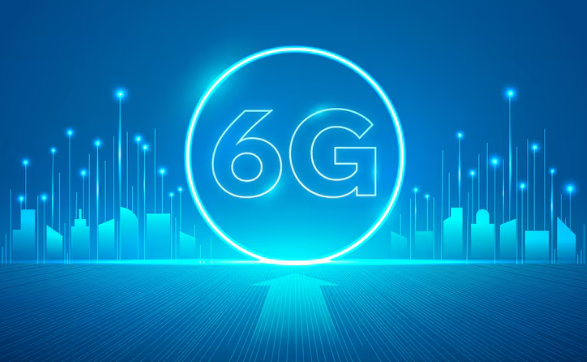The concept of smart homes has evolved rapidly over the past decade, transforming from a futuristic fantasy into an attainable reality. As the Internet of Things (IoT) continues to expand, the future of smart homes looks incredibly promising, driven by embedded technologies that enhance convenience, security, and energy efficiency. In this blog, we’ll explore seven key embedded technologies that are set to shape the future of smart homes.
1. Voice-Activated Assistants
Voice-activated assistants like Amazon’s Alexa, Google Assistant, and Apple’s Siri have already become household staples. These AI-powered systems allow users to control smart home devices, set reminders, play music, and more, all through simple voice commands.
Future Prospects:
- Advanced Natural Language Processing (NLP): Future voice assistants will understand context better and offer more accurate responses.
- Integration with More Devices: Expect deeper integration with a wider range of smart devices, making entire home ecosystems seamlessly interconnected.
Statistical Insight: In 2023, around 107 million smart speakers were shipped globally, occupying around 12 percent of the smart home device market. The number of shipments is forecast to increase in the coming years, reaching around 122.5 million units by 2027. (Statista)
2. Smart Lighting Systems
Smart lighting systems, such as Philips Hue and LIFX, enable users to control their home’s lighting through smartphones or voice commands. These systems offer various benefits, including energy efficiency, customizable ambiance, and enhanced security.
Future Prospects:
- Adaptive Lighting: Future systems will automatically adjust lighting based on the time of day, weather conditions, and personal preferences.
- Enhanced Energy Efficiency: Continued advancements in LED technology and integration with home energy management systems will further reduce energy consumption.
Statistical Insight: The global smart lighting market size is expected to reach USD 18.0 billion by 2029 from USD 9.5 billion in 2024, growing at a CAGR of 13.8% during the 2024-2029 period. (MarketsandMarkets)
3. Smart Security Systems
Smart security systems have revolutionized home safety, offering features like real-time surveillance, remote monitoring, and automated alerts. Brands like Ring, Nest, and Arlo provide comprehensive security solutions that are easy to install and use.
Future Prospects:
- AI and Machine Learning: Future security systems will use AI to differentiate between actual threats and false alarms, reducing unnecessary alerts.
- Integration with Home Automation: Security systems will increasingly integrate with other smart home devices, such as smart locks and lights, to provide a cohesive security solution.
4. Energy Management Systems
Energy management systems (EMS) are crucial for optimizing energy consumption and reducing utility bills in smart homes. These systems monitor energy usage and automate devices to operate during off-peak hours.
Future Prospects:
- Smart Grids Integration: Future EMS will integrate more effectively with smart grids, allowing homes to sell excess energy back to the grid.
- Predictive Analytics: Advanced analytics will predict energy usage patterns and suggest personalized energy-saving tips.
Statistical Insight: The global energy management systems market size was valued at $36.2 billion in 2020, and is projected to reach $161.9 billion by 2030, growing at a CAGR of 16.2% from 2021 to 2030. (Allied Market Research).
5. Health Monitoring Devices
Smart homes are increasingly incorporating health monitoring devices to track residents’ health metrics, such as heart rate, sleep patterns, and physical activity. These devices can alert users or healthcare providers to potential health issues.
Future Prospects:
- Continuous Monitoring: Wearables and in-home devices will offer continuous health monitoring, providing real-time data to users and healthcare professionals.
- Integration with Healthcare Systems: Enhanced integration with healthcare systems will facilitate remote consultations and timely medical interventions.
6. Smart Appliances
Smart appliances, such as refrigerators, ovens, and washing machines, are becoming more prevalent in modern homes. These appliances can be controlled remotely and offer features like automatic restocking, energy-saving modes, and maintenance alerts.
Future Prospects:
- Enhanced Connectivity: Future smart appliances will feature enhanced connectivity with other devices and platforms, creating a more integrated smart home environment.
- AI-Driven Features: Appliances will use AI to learn user preferences and optimize performance accordingly.
7. Home Entertainment Systems
Home entertainment systems are evolving with technologies like 4K/8K televisions, surround sound systems, and streaming devices. These systems provide a rich entertainment experience that can be controlled via voice commands or mobile apps.
Future Prospects:
- Immersive Experiences: Future systems will offer more immersive experiences with virtual reality (VR) and augmented reality (AR) integration.
- Personalized Content: AI will curate personalized content recommendations based on user preferences and viewing habits.
Conclusion
The future of smart homes is undeniably exciting, with embedded technologies at the forefront of this evolution. From voice-activated assistants to advanced energy management systems, these innovations promise to make our lives more convenient, secure, and efficient. As these technologies continue to develop, the smart home experience will become more seamless and intuitive, offering endless possibilities for enhancing our daily lives. Experience customized non-generic smart home and other embedded technologies that push you ahead of the curb, developed on the latest platforms and hardware, by partnering with STL Digital’s Embedded Engineering Services.



